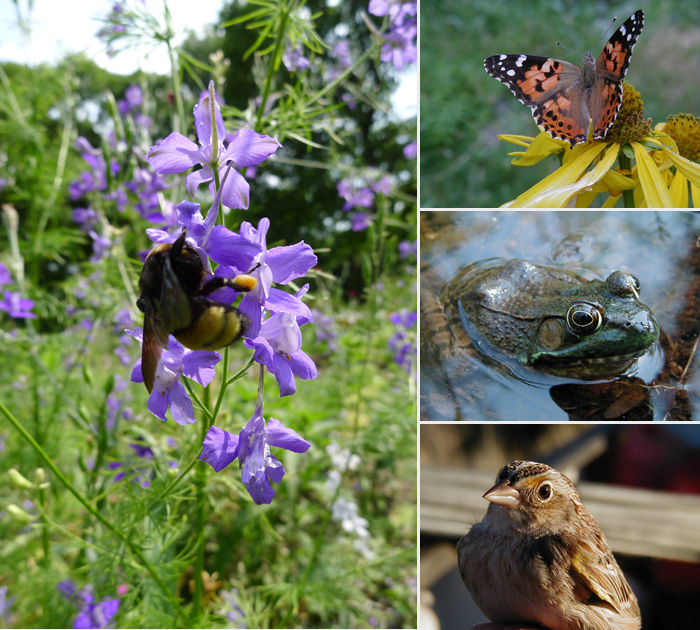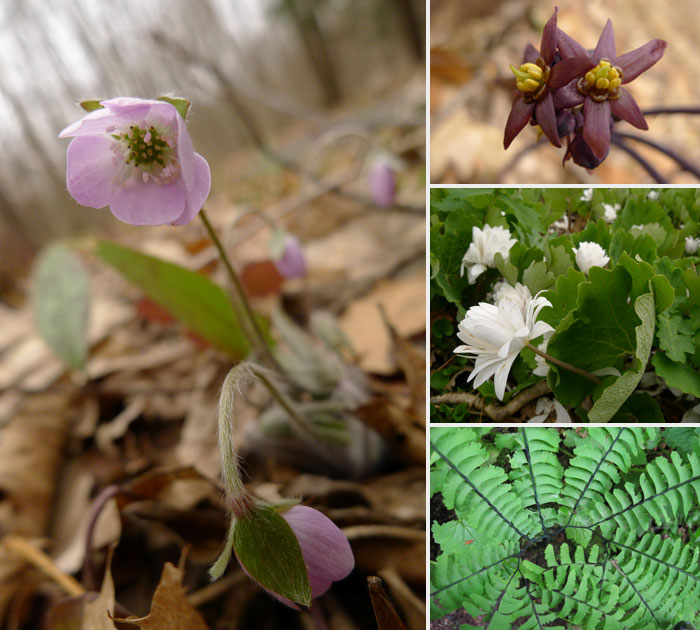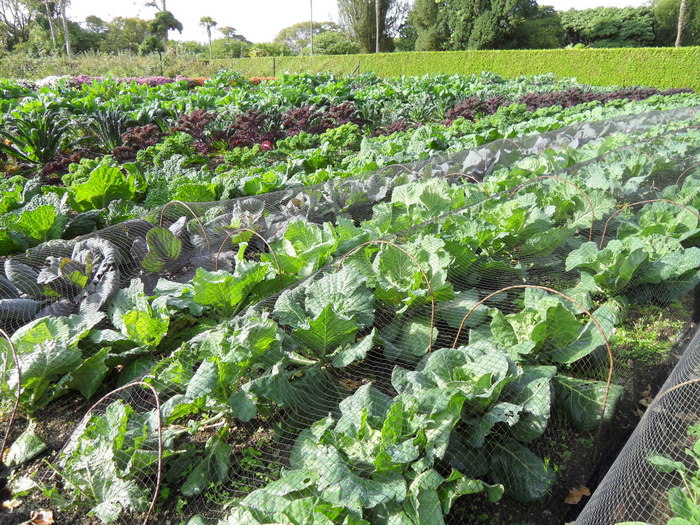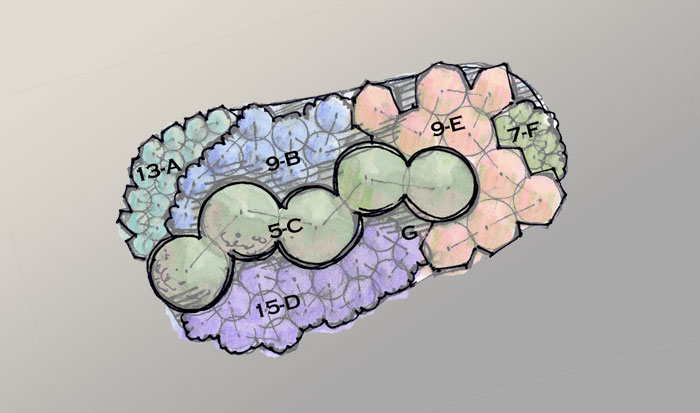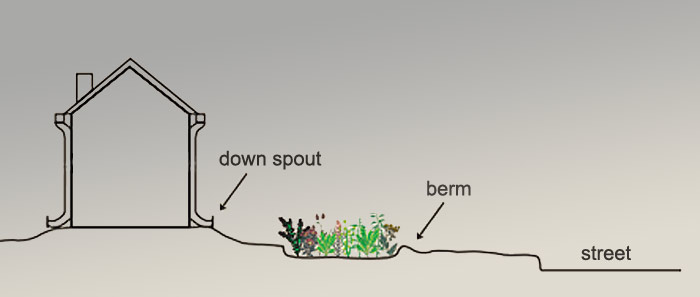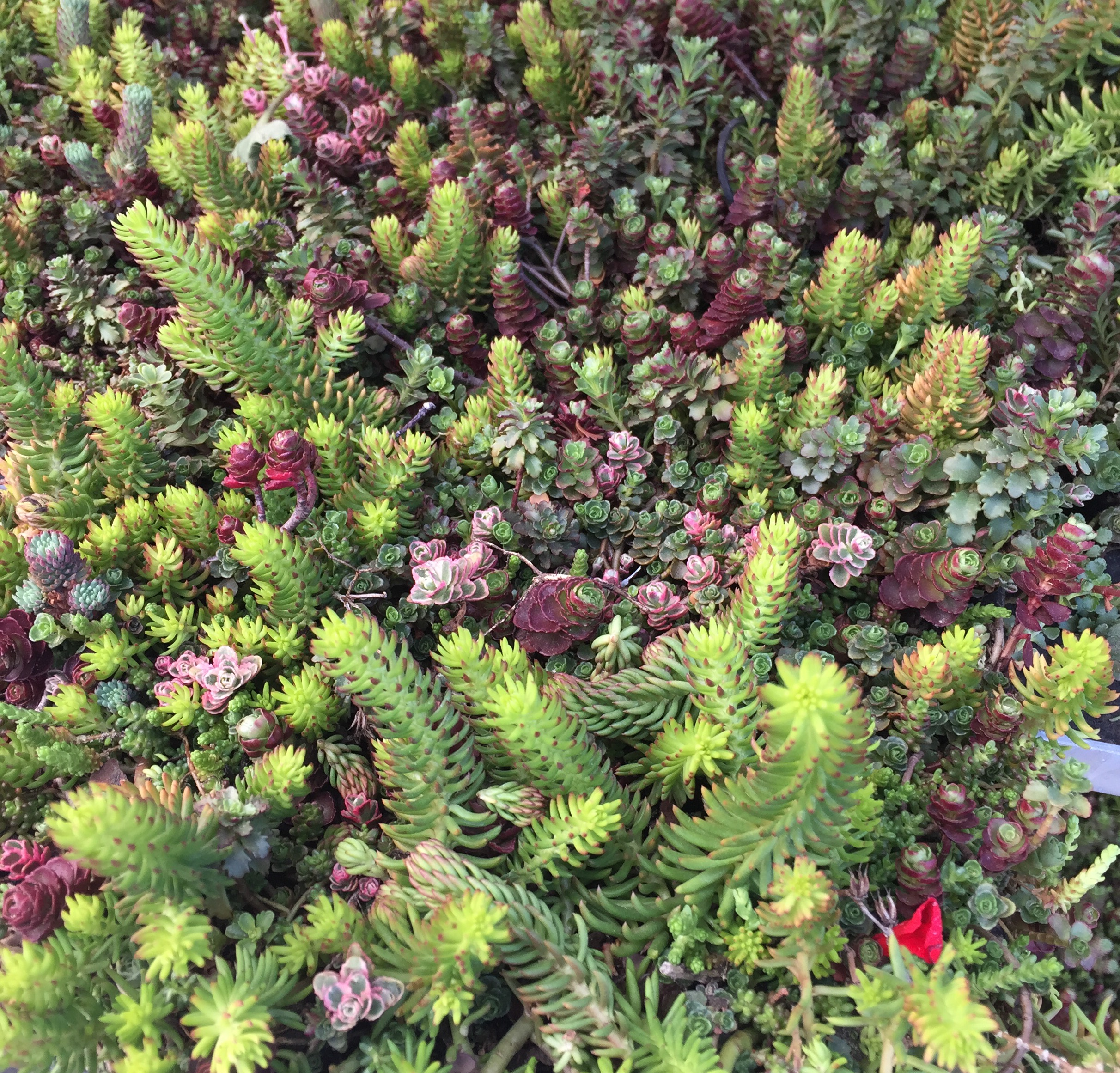
These drought hardy ground covers and perennials can add a variety of colors and textures to the garden. Because they’re so drought tolerant they can be used in rock gardens, barren soils, and places that are too far to reach with irrigation. It’s for this reason that they are the plant group that is typical on green roofs, where heat and drought can be extreme. In fact, sedums will thrive in fast draining soils and hot exposed areas where, hopefully, they’ll have less competition from aggressive weeds. They prefer full sun, though most do fairly well in partial sun. The one sure place to avoid planting a sedum is one that doesn’t drain well. They can be incorporated into dry stone walls, or used as a ground cover along stepping stones as they tolerate foot traffic. In fact, one of my favorite uses that I’ve come across was as a sedum beach along Cayuga Lake. Held several feet above the shore by a small seawall, they thrived unattended in the sandy soil. Low growing, they made a beautifully textured area to hang out by the water.
One of my favorite ground cover sedums is ‘Angelina’. It has a great texture all summer long and a burst of yellow flowers. When it really comes to life though is the first thing in the spring when it’s foliage is a blend of fiery reds, oranges, and yellows.
Sedum rupestre ‘Angelina’
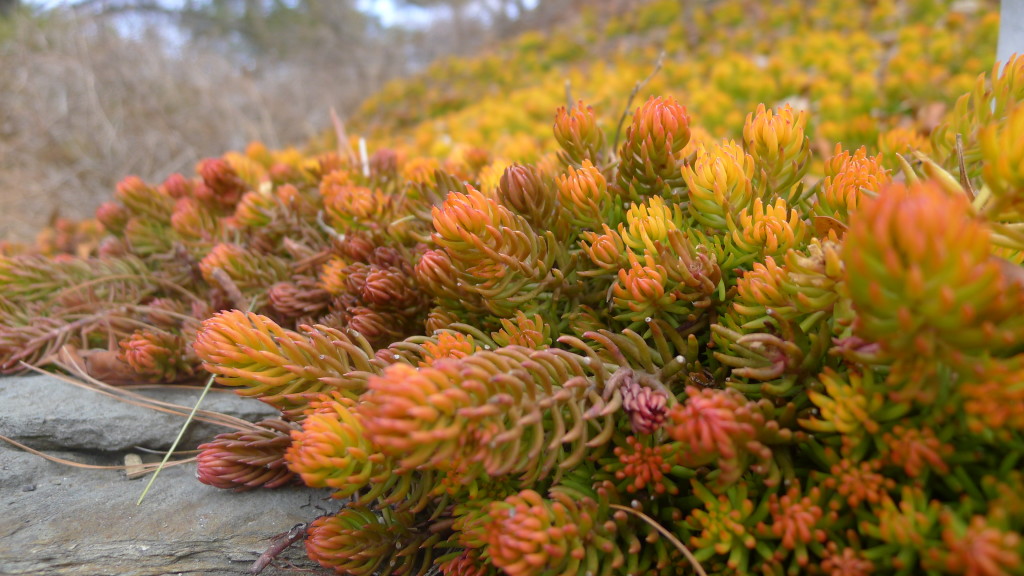
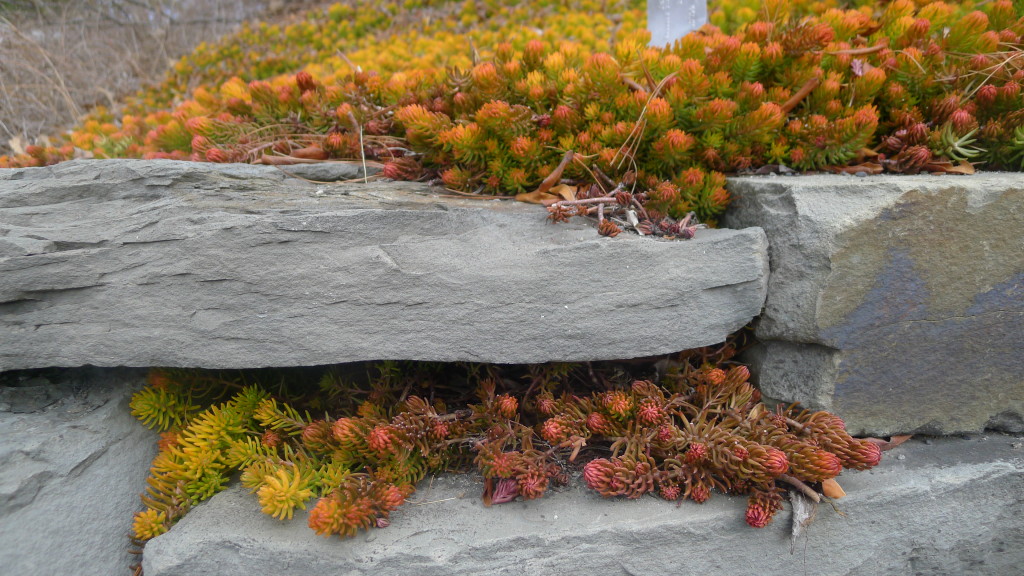
Many sedums change foliage color throughout the season. For instance, several Sedum spurium varieties (e.g. Red Carpet, Voodoo, Dragon’s Blood) are a deep blood red color in spring, slowly fading to a dark green throughout the summer. It’s also available in a variegated variety, tinged with pink called Tricolor.
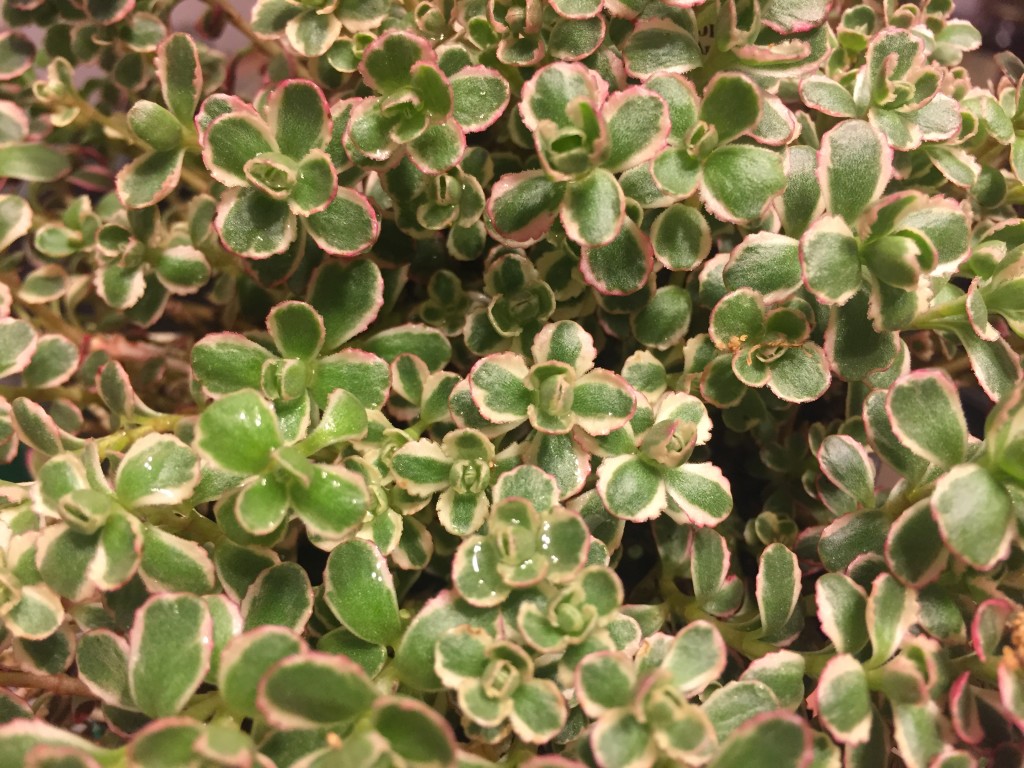
Our native sedum is Sedum ternatum, which is more shade tolerant and somewhat less drought tolerant than the non-native species. It’s not as showy as many other sedums, but delights with it’s spring green foliage and starlike white flowers.
Some additional ground cover varieties of sedum include:
S. album ‘Murale’: this cultivar has pinkish flowers as opposed to the typically white flowers of sedum album. Both are ~4″ in height, and light green in foliage, turning bronze in winter.
S. divergens: dense foliage that breaks easily. Green to red foliage with yellow flowers.
S. ewersii: trailing light green foliage with bright pink flowers.
S. rupestre ‘Green Spruce’: the same species and form as ‘Angelina’ but with blue-green foliage.
S. sexangulare: leaves in whorls of six, creating a twisting pattern with yellow flowers.
Sedums – a diversity of adorable succulents
Bringing Butterflies to the Garden
The video above (produced by Chap Fowler of Fig Jam Studios) documents a butterfly conservatory in Costa Rica that I was lucky enough to spend a month working at this winter and where I learned more than I ever expected to know about butterflies. Since returning, I’ve been working on transferring what I learned in Costa Rica to design gardens here in Eastern North America that benefit and attract native butterflies. Given how diverse and complex butterflies are, this can be a complicated topic but, if you’d like to attract butterflies to your garden, here is the groundwork and some resources to take you further:
First Off: Providing Butterfly Food
Actually, butterflies and moths get there food from a wide range of sources that can include nectar, rotting fruit, pollen, and even dung or dead animals. Their proboscis, or feeding tube, is only capable of taking in liquid nourishment, though some butterfly species have developed the ability to excrete enzymes that can liquify pollen so that they’re able to ingest this rich food source as well. Most butterflies, however, are nectar drinkers. Thus to provide a food source for the widest range of butterfly species we must provide nectar in forms that they can access.

So what nectar producing flowers do butterflies prefer? They tend to be those that provide a wide landing pad, often composite or clustered flowers; and have short, tubular flowers that they can reach their proboscis into. Flower colors that attract them include red, yellow, orange, pink, and purple. Here are some examples of desirable plants:
Lilacs (Syringa)
Milkweeds (Asclepia)
Bee Balms (Monarda)
Sunflower (Aster) family plants (New England Aster, Echinacea, Oxe-eye Daisy, Hawkweeds, Goldenrods, etc.)
Blazing Star (Liatris)
Having a sequence of blooms throughout the year is also helpful, so that there is always some nectar available. Also, butterflies want more than just food; like us they want to be comfortable. Providing flat rocks in a sunny place will give them someplace to warm up. Puddles too are great, as they often drink from these for water and minerals.
Feeding butterflies is only part of the picture, however. There’s also…
The Very Hungry Caterpillar:

Many species spend more of their lives as caterpillars than they do as adult butterflies. Providing food for caterpillars, however, is a far more complex topic. This is because most butterfly species lay their eggs on specific host plants, often only a few species or a small group of plants. With hundreds of butterfly species and thousands of moth species occurring in North America, the list of plants that house their eggs and larvae is also diverse. To select host plants, probably the best tactic is to first figure out which butterfly or moth species you’d like to host and then find out what plants they lay their eggs on. Also, you’re most likely to have caterpillars in your garden if you grow host plants for some of the more common butterflies in this area. A few common species in upstate NY and their host plants are:
Monarch (Danaus plexippus) – Milkweeds (Asclepia species)
Black Swallowtail (Papilio polyxenes) – Parsley family (Apiaceae) plants such as Queen Anne’s lace, fennel, carrot
Eastern Tiger Swallowtail (Papilio glaucus) – A generalist on several woody plant groups including Cherry (Prunus), Magnolia, Tulip Tree (Liriodendron), Birch (Betula), and Willow (Salix)
Great-spangled Fritillary (Speyeria cybele) – Violets (Viola)
Orange Sulphur (Colias eurytheme) – Pea family plants such as Sweet White Clover (Melilotus alba) and White Clover (Trifolium repens)
Silver Spotted Skipper (Epargyreus clarus) – Woody legumes such as Black Locust (Robinia psuedoacacia) and Honey Locust (Gleditsia triacanthos)
And a few other particularly loved species:
Viceroy (Limenitis archeppus), a monarch mimic – Willows (Salix), Poplars (Populus)
Spicebush Swallowtail (Papilio trolius) – Spicebush (Lindera) and Sassafras
Cecropia Silk Moth (Hyalephora cecropia) – Woody plants such as Maples (Acer), Willows (Salix), Dogwoods (Cornus), Cherries (Prunus), Apples (Malus)
Luna Moth (Actius luna) – Sweetgum (Liquidambar), White Birch (Betula papyrifera), Persimon (Diospyros), Hickories (Carya), Walnuts (Juglans), and Sumacs (Rhus)
Hummingbird moth (Hemaris thysbe) – Honeysuckle (Lonicera) and Hawthorn (Crataegus)
American Cooper (Lycaena phlaeas) – Sheep Sorrel and Curled Dock (Rumex)
This is just a primer. For more information on host plants and on butterflies and moths in general a great resource is www.butterfliesandmoths.org
Early Spring Color
Around this time of year, the winter is feeling painfully old to most of us. We’re starving for some color and warmth in our lives. Unless you have a wood burning stove, plants are probably not the solution to cranking up the heat, but there are several plants that may surprise you with how early they bloom, bringing bursts of color when they are needed most. Here is a illustrated list of some of these harbingers of spring:

A hybrid witch hazel, Hamamelis x intermedia. Hybrid witch hazels can begin blooming in February or March, given a few above freezing days
 Winterhazel, Corylopsis. Another shrub that flowers in early spring, closely related to witch hazel. Not quite as early, blooming in April, but their fragrance and burst of yellow on naked stems have a magical quality. Fragrant Winterhazel, C. glabrescens, and Spike Winterhazel, C. spicata, are the most cold hardy, though outside the warm valley of Ithaca, a sheltered spot is best to protect their flower buds.
Winterhazel, Corylopsis. Another shrub that flowers in early spring, closely related to witch hazel. Not quite as early, blooming in April, but their fragrance and burst of yellow on naked stems have a magical quality. Fragrant Winterhazel, C. glabrescens, and Spike Winterhazel, C. spicata, are the most cold hardy, though outside the warm valley of Ithaca, a sheltered spot is best to protect their flower buds.
 Glory of the snow, Chionadoxa. A fall planted bulb with tiny flowers that, in mass, create a beautiful, soft carpet of blues. A joy in spring and deer resistant.
Glory of the snow, Chionadoxa. A fall planted bulb with tiny flowers that, in mass, create a beautiful, soft carpet of blues. A joy in spring and deer resistant.
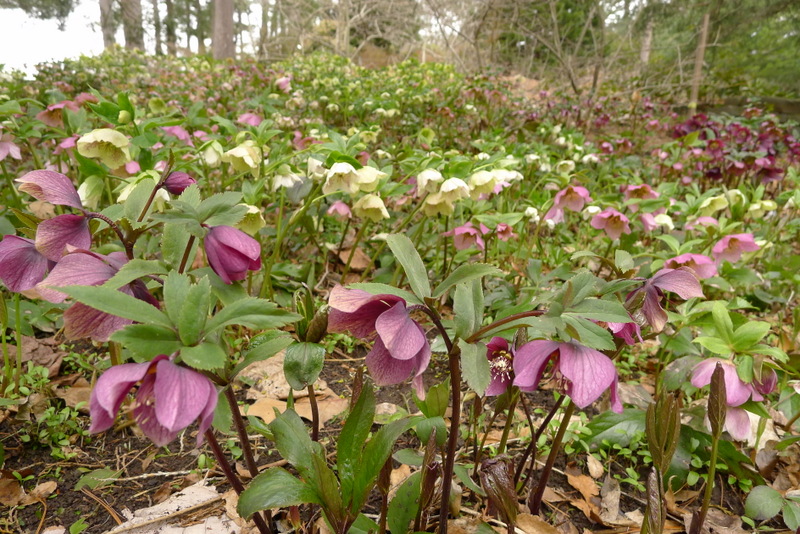 Hellebore or Lenten Rose, Helleborus. Hellebores retain their leaves all winter, though they begin to look pretty beat up come winters end. Cut off the old damaged leaves in March to reveal the exquisite, long-blooming flowers.
Hellebore or Lenten Rose, Helleborus. Hellebores retain their leaves all winter, though they begin to look pretty beat up come winters end. Cut off the old damaged leaves in March to reveal the exquisite, long-blooming flowers.
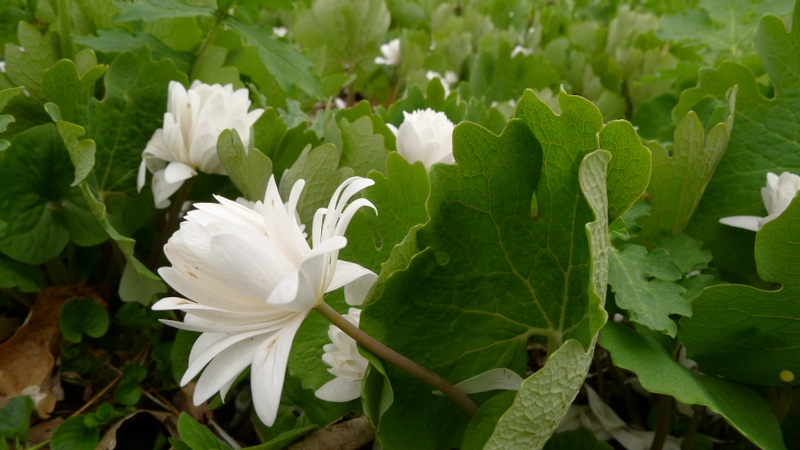
Bloodroot, Sanguinaria canadensis. A beautiful spring flowering plant native to Eastern North America. Pictured is a double flowered variety called ‘Multiplex’
Other early spring bloomers:
Snowdrops, Galanthus – A delightful bulb with drooping white flowers
Forsythia, Forsythia – Unless you have lots of space to fill go with a low growing cultivar such as ‘Gold Tide’
Winter Aconite, Eranthus hyemalis – Tiny, delightful yellow flowers
Crocus, Crocus sp. – A common early spring flower with many varieties in a range of colors.
Daffodils, Narcissus – Numerous varieties of this reliable bulb are available in shades of yellow, white, and orange.
Landscapes for Life
At the heart of sustainability in the garden are the 5 core elements above: soils, water, plants, materials, and human health/well being. By addressing each of these categories we can create landscapes that work with nature to protect and restore natural ecosystems and the human benefits that they provide.
Landscapes for Life, a joint project between the U.S. Botanic Garden and the Lady Bird Johnson Wildflower Center, is devoted to teaching people how to create and maintain sustainable, beautiful home gardens. They translate rules set out in Sustainable Sites Initiative, a 3rd party certification organization for sustainable landscapes, to a scale appropriate for the homeowner. Here are some of the basics of the sustainable garden for each of these categories:
Soils:
Soils become degraded through construction and other human activities. They become compacted, over-fertilized, eroded, and stripped of organic matter. Working with soils in a sustainable way often means returning organic matter to reduce compaction, and restore poor or neglected soils. It means using chemical fertilizers only when necessary to solve a problem and protecting soils from further compaction, often with a layer of mulch.
Water:
Shortages of clean freshwater are becoming one of the most urgent challenges we face and the use of potable water on lawns and gardens are a significant cause of this. In addition, runoff from gardens often contain fertilizers and pollutants that damage aquatic ecosystems in our rivers, lakes, and streams. A sustainable landscape minimizes the use of potable water by selecting plants that can thrive without supplemental water once established and by using alternative sources of water such as harvested rainwater. In addition, we can use rain gardens, bio-swales, and other water retention techniques to store water on site and release it slowly into the groundwater and prevent storm surges that can overflow sewer systems.
Plants:
The number one rule in selecting plants is to avoid the use of known or potentially invasive plants that can escape and damage native ecosystems. Instead use native and regionally adapted, non-invasive plants to reduce the use of potable water, fertilizers, and pesticides. Proper plant selection may also provide a range of benefits including food and shelter for wildlife, reducing home heating and cooling requirements through proper placement, and preserving rare and threatened native plant species.
Materials:
The best materials for a sustainable garden are non-toxic, local, have low embodied energy (e.g. they don’t take a lot of energy to produce), are sustainably harvested, and are durable. The 3 R’s: reduce, reuse, and recycle are an excellent mantra for sustainable materials use.
Human health and well-being:
In protecting the planet we must not forget about our own well-being, as we too are a part of nature. Sustainable gardens limit the use of toxic chemicals, and seek to create a harmonious environment that promotes and sense of well-being and provides space for activity and/or an inviting social atmosphere. Research has shown that even just the view of natural landscapes from a window can speed recovery after an injury or illness. A well designed garden can reduce stress in the viewer and restore their ability to focus after becoming mentally fatigued.
For more information on sustainable home landscapes see the Landscapes for Life website: http://landscapeforlife.org/
Low Maintenance Gardens
Thankfully, for both home owners and the planet, there is a lot of overlap between sustainable gardens and ones that require little in way of maintenance. Avoiding the need for gas powered mowers, hedgers, and other maintenance tools is one the tenants of sustainable gardening and one that can save you a lot of time and hassle. While not all low-maintenance gardens are sustainable, here are a list of management techniques that create both sustainable and low-maintenance gardens:
1) Extensive use of low-maintenance shrubs that are selected to fit the site conditions: Many shrubs require very little maintenance throughout the year and, if they are selected wisely, will thrive for many years in a garden.
2) Add a healthy layer of mulch: Applying a layer of natural mulch to a garden to 3 inches depth can greatly reduce the need for weeding. As the mulch breaks down it naturally builds the soils organic matter, helping to maintain good plant nutrition and building a healthy soil biota.
3) Reduce or eliminate lawns or use low-mow lawn types: Mowing lawns is the probably the most labor intensive task in a garden. Reducing the amount of lawn or moving to a low-mow lawn type can vastly reduce the amount of maintenance needed. This also reduced the amount of carbon and volatile compounds released in to the atmosphere from gas powered mowers.
4) Reducing or eliminating fertilizer use: Fertilizers are highly overused in the garden and this promotes the growth of weeds as well as leading to fertilizer leaching into groundwater and eventually lakes and streams, where nutrient overabundance has become a huge problem. In a healthy soil, with plants selected appropriately for the site, fertilization should be entirely unnecessary.
Gardens for Wildlife
Our gardens are often places of retreat for us, where we can restore ourselves through play and relaxation. A garden can be place of retreat for other animals as well, where they can find food or take shelter, especially if we take care to provide these. Creating a garden that attracts and supports wildlife involves planning on many levels. A garden with diverse plantings, with areas of shelter where birds feel safe, that have shallow water for bathing, where plants are blooming throughout the season offering a steady supply of pollen and nectar; these are just some of the ways in which we can attract wildlife to our gardens. Terrasana Gardens will design a garden with plant selections that will draw in the birds, insects, or other wildlife that you’d most like to see in your garden.
Plant Selection
We make plant selections based on several factors including a comprehensive site assessment, diversity, design harmony, ecosystem services, pest resistance, availability, and client preferences. Good design comes from the consideration of many factors in order to make the best possible selections.
Native Plant Gardens
Using native plants in your garden is a wonderful way to support the natural diversity of our regional biome. Native plants offer a range of benefits including:
-Promoting healthy food webs by supplying plant foods that co-evolved with the local wildlife
-Supplying nourishment to host specific pollinators
-Avoiding the introduction of potentially invasive plants
-Native plants are well-adapted to the regional climate
-Planting rare native plants enhances the natural diversity can help protect struggling populations
Food Gardens
You can’t eat more local than your own backyard. The benefits of turning your backyard into a productive paradise are many – to your own health, the health of your community, and the health of the planet.
We design food and permaculture gardens that are both productive and beautiful. They are a feast for the body and the eyes, while being mindful of our impact on the natural world.
Rain Gardens
A rain garden is a planted area that is sunken several inches into the ground in order to retain stormwater flowing off paved areas, slopes, or building roofs. They are beneficial in several ways such as:
-Helping protect streams and lakes from pollutants carried by urban stormwater such as lawn fertilizers and pesticides, oil leaking from cars, and other pollutants that wash off roofs and paved areas
-Helping protect communities from flooding and drainage problems
-Reducing the load on sewage systems and helping to prevent sewage overflows
-Providing valuable habitat for birds, butterflies and many beneficial insects
-Increasing the amount of water that filters into the ground, which recharges local and regional aquifers



